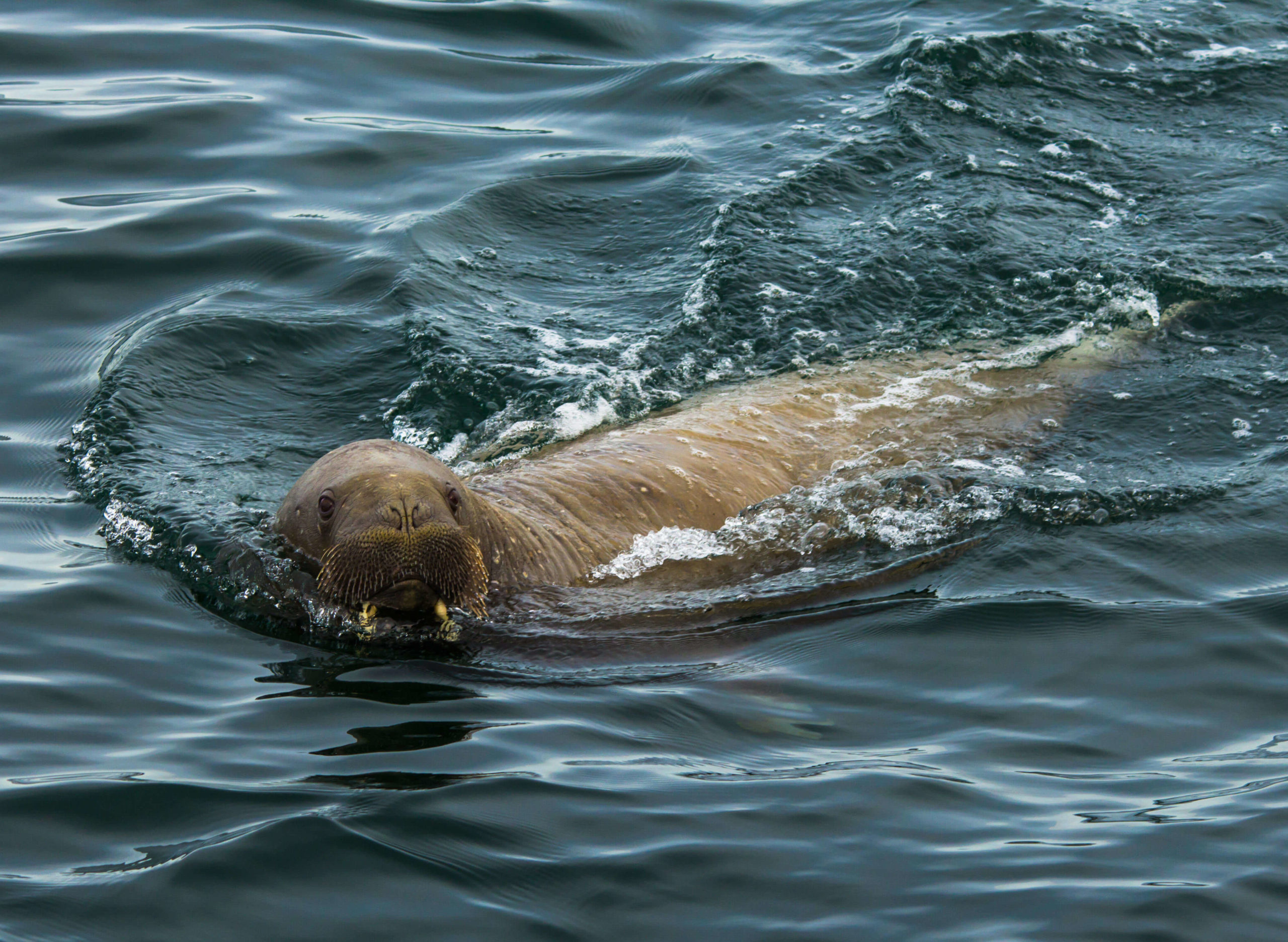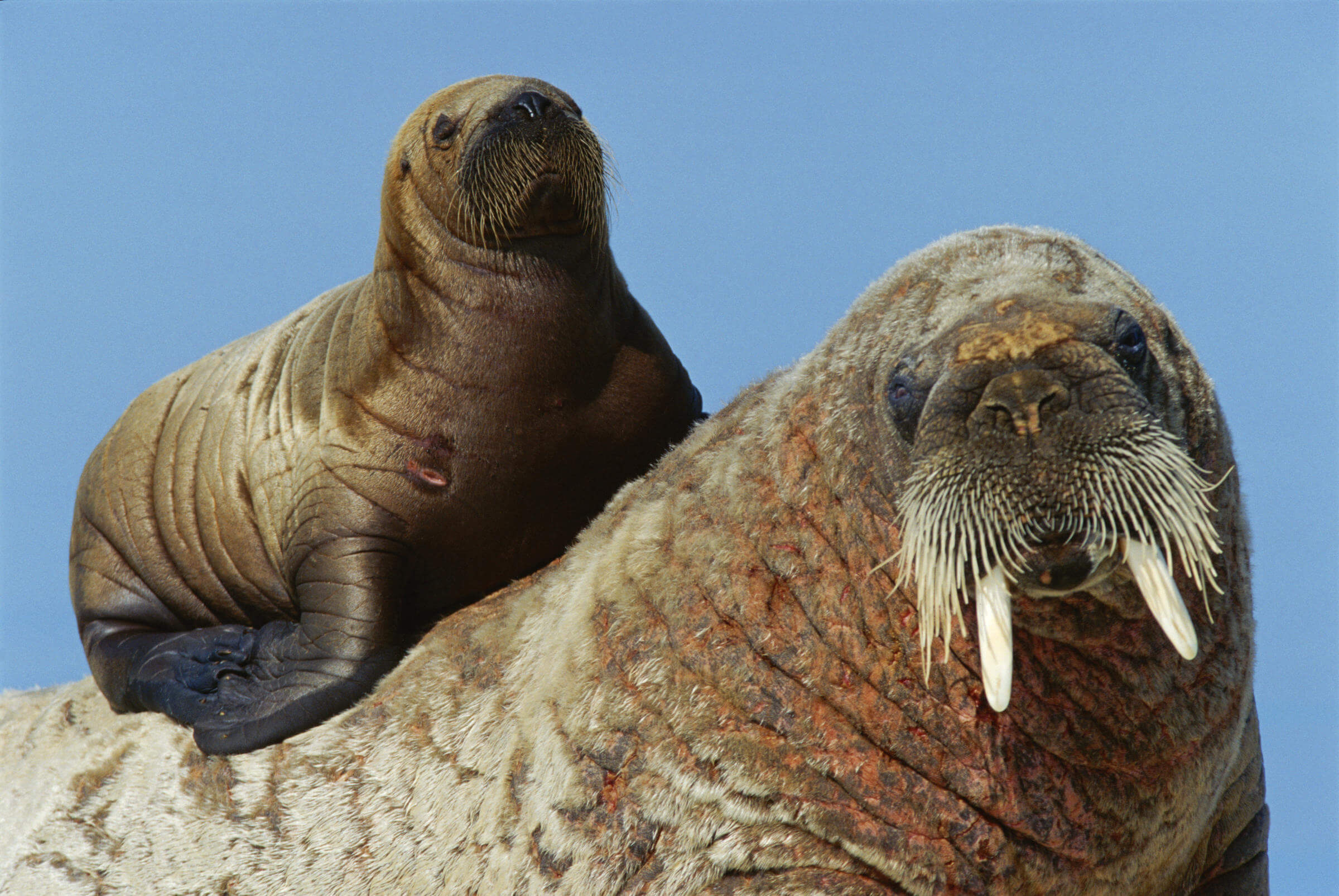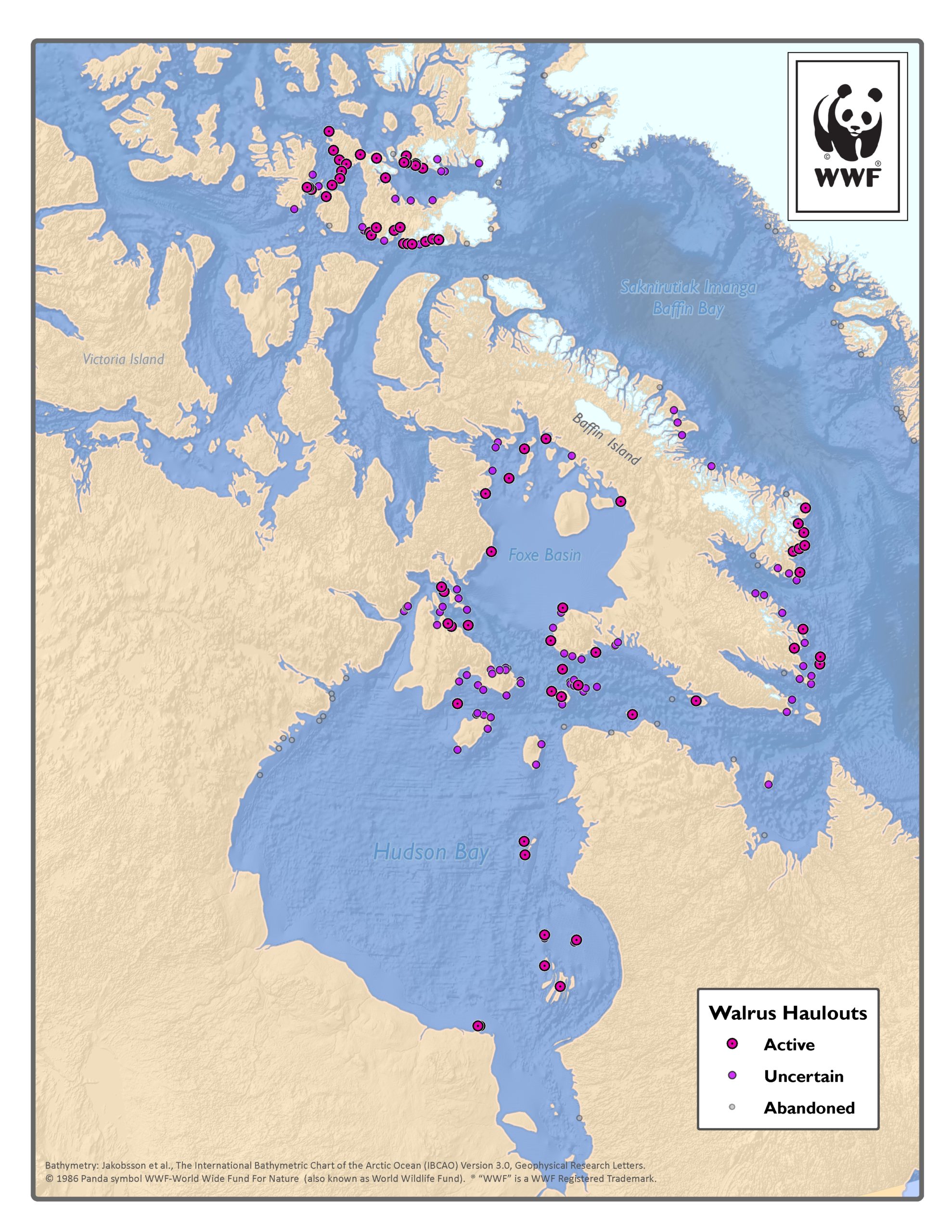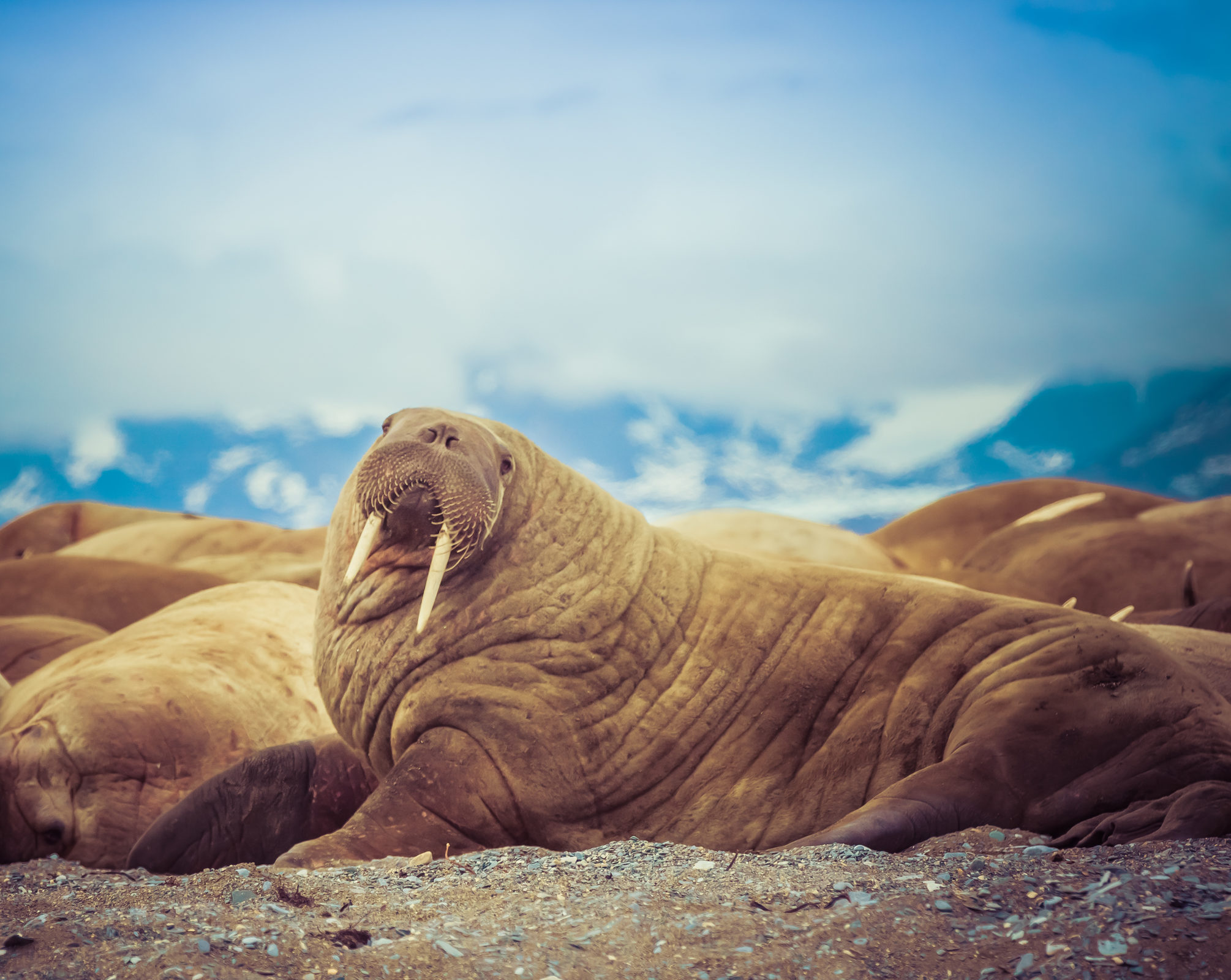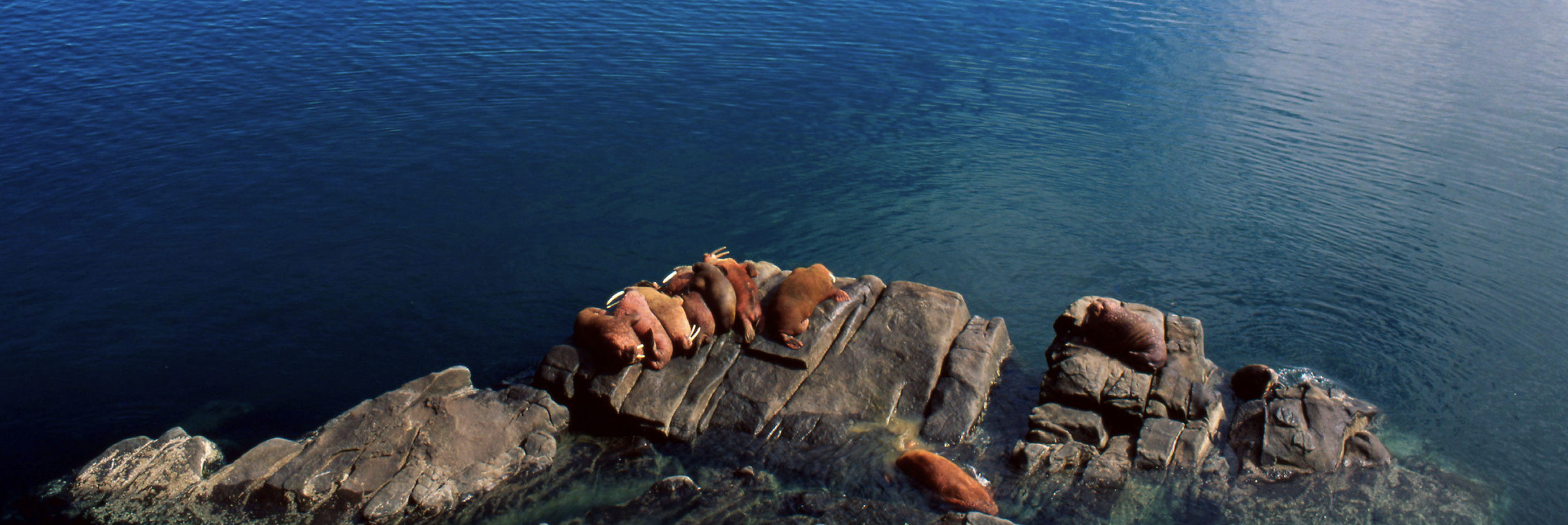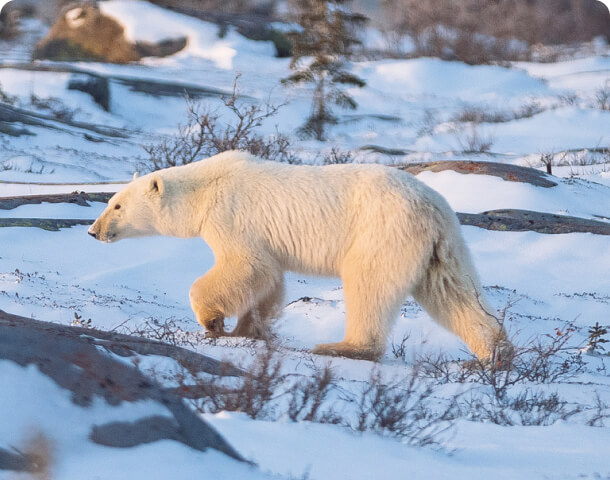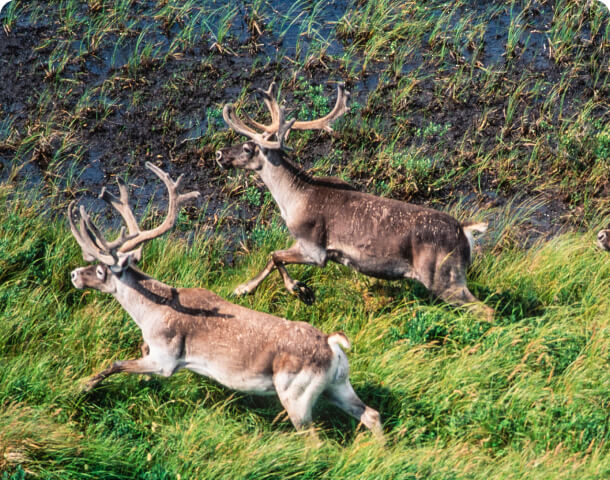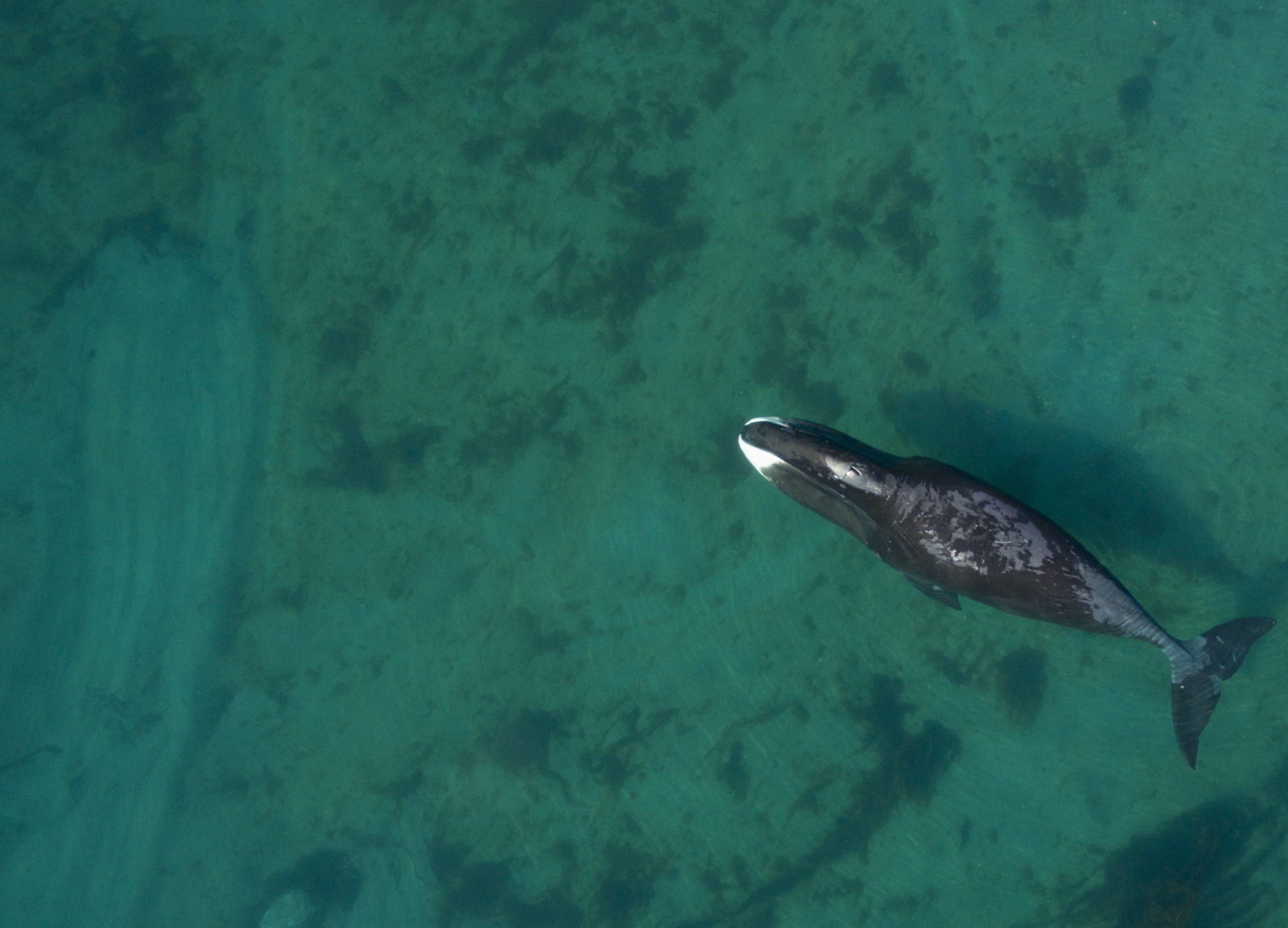There are two subspecies of walrus — the Atlantic walrus and the Pacific walrus. For both, their world is changing fast. Walruses are threatened by a warming climate and subsequent sea ice loss that can increase crowding at terrestrial haulout sites and limits access to preferred habitat.
Walruses may be massive, but they are incredibly sensitive to sounds and stress. Shrinking sea ice is opening the Arctic to economic opportunities, including oil and gas exploration and increased shipping through sensitive marine habitats. That noise and activity is hard on the walruses. A disturbance can result in a stampede, which may be lethal to these animals.
To see the devastating effect of panic among Pacific walruses, watch this video from Our Planet, a Netflix original documentary series and collaboration involving Netflix, Silverback Films and WWF.

